Tamron Blogs
Share the article:
More Photo Tips | Video Gallery | Photo Gallery | Enewsletter sign-up
Photographing an Airshow
Images & article by Carolyn Hutchins
Photographing an airshow presents a unique set of challenges. Over recent years the two lenses that I have come to rely on most when doing so, have been the Tamron 150-600mm and the Tamron 18-400mm. I’ve used them in combination with DSLR and mirrorless systems from Nikon, and they work effortlessly with both.
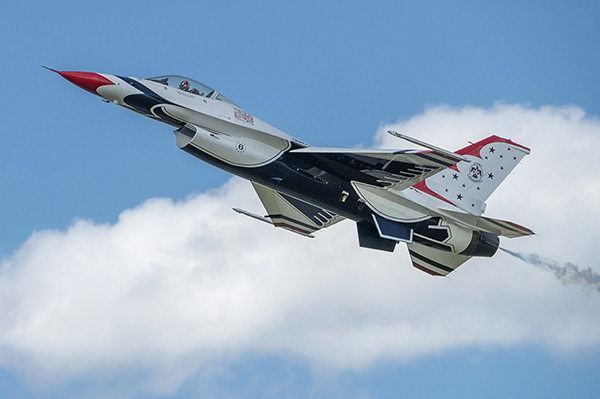
150-600mm, 460mm, f/10, 1/2000 sec., ISO 100
Click image to view larger
This year, the main performers at Sun ‘n Fun were the US Air Force Thunderbirds, an aerobatic team of F-16s. To get tight images, I use the 150-600, as it provides great reach, but also goes wide enough for me to capture multiple jets when they are flying in formation. It’s sharp enough to pick up the smaller details, so I also use this lens for the skydiving teams, here it’s one from the SOCOM Para-Commandos. Because every show begins with a flag jumper during the national anthem, this is an important moment, and the details need to look right (the stars and stripes can’t look like dots and streaks).
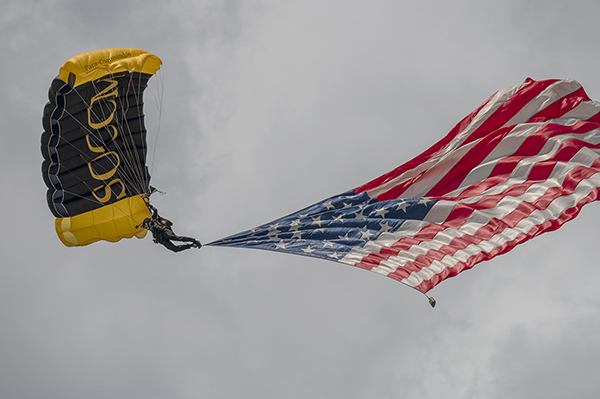
150-600mm, 500mm, f/10, 1/1000 sec., ISO 100
Click image to view larger
But the Tamron 150-600mm is not a small lens, which is why practice is important as well. Learn your gear, the more familiar with it you are, the better. Jets move fast, and you will probably not get a second chance to catch something. For me, one of the biggest challenges is balance. I am not a tall person, and even without being extended or having the lens hood on, the 150-600 is half of my forearm. So, when I am stationed on a small platform, and in strong wind, stabilization can be a challenge. Through (a lot of) practice, I have figured out the best ways to stand, brace myself, and move along with the subjects I happen to be tracking.
For the evening shows, I tend to use the Tamron 18-400 a bit more. With less light in the sky and more prop aircraft, the need arises for slower shutter speeds. The 18-400 is smaller and lighter, giving me the ability to move quicker, while still giving me the zoom reach that I need. Here, RJ Gritter is flying aerobatics in a high wing airplane at sunset. So, for this situation, it was all about the colors. The bright pattern of the aircraft stands out very strongly against the colors of the sky, and that’s what I really wanted to capture.
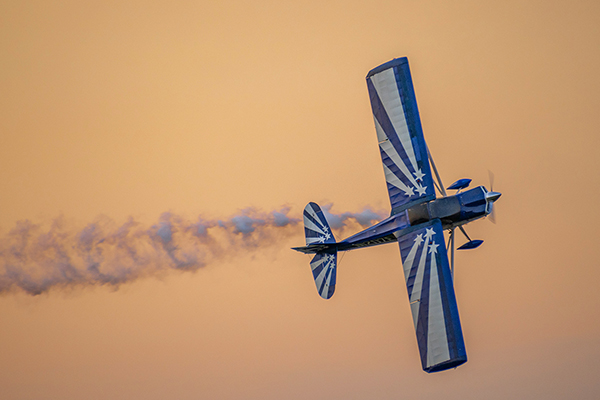
18-400mm, 370mm, f/7.1, 1/640 sec., ISO 320
Click image to view larger
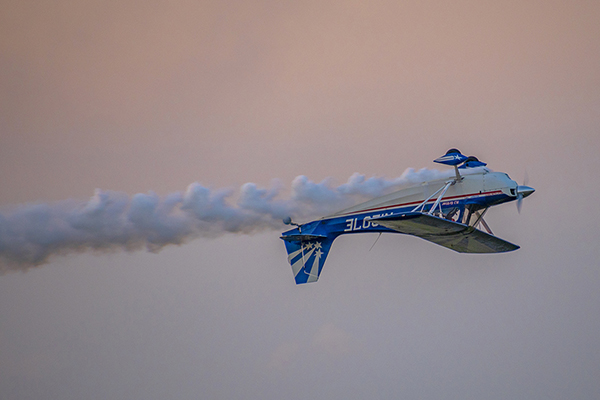
18-400mm, 330mm, f/6.3, 1/640 sec., ISO 320
Click image to view larger
In addition to the actual flights, I also must document many other aspects of the show. The Tamron 18-400mm is unmatched in the versatility of its range, making it easy for me to turn around and capture images of the people as I make my way throughout the grounds, and saving me a great deal of time by not having to change lenses from one assignment to the next.
Like anything, it’s important to prepare for airshows. Pay attention to obvious things like weather, but also give thought to the layout of the airport. Is the runway east/west or north/south? Where do the aircraft taxi in and out? Where will the sun be facing at times of the show? What exactly do you want to capture? Propeller aircraft? Jets? Static displays? Some of my favorite places to shoot from are not actually at the show center, in fact, the two 4 plane formation images of the Thunderbirds were both taken from the eastern end of the runway. So, while there can be quite a lot to consider, a little bit of research for your individual situation will go a long way.
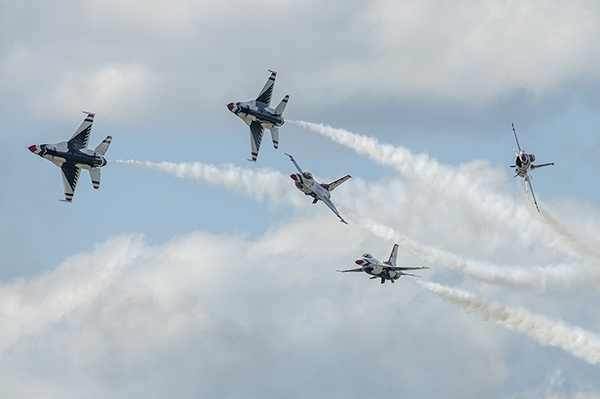
150-600mm, 600mm, f/10, 1/2000 sec., ISO 100
Click image to view larger
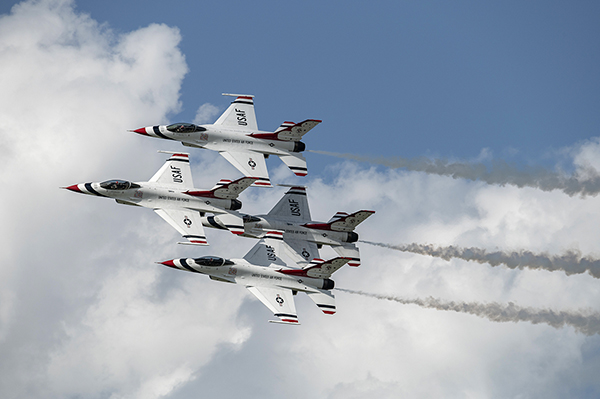
150-600mm, 450mm, f/9, 1/2000 sec., ISO 100
Click image to view larger
Good luck and find an Authorized Tamron Dealer today!
@carolynh527
More Photo Tips | Watch Videos | Learn More About Tamron Lenses | Photo Gallery